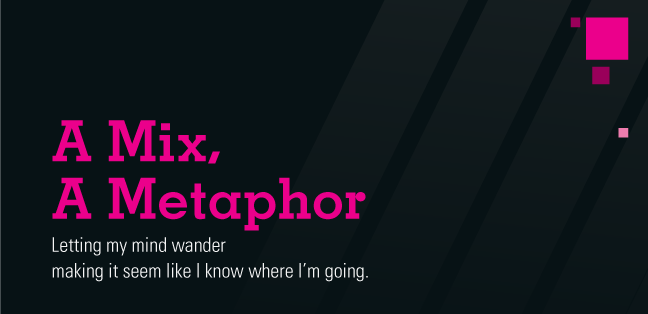I started drawing at about 3 months old. It's true. Since I was the first born son, I was also the first born guinea pig. So at 3 months old, sitting quietly in my high chair, my mom set a few crayons and a yellow sheet of construction paper in front of me and watched. Without any instruction, I instinctively picked up a crayon and pressed it to the page. The resulting scribbles are still framed in my parents bedroom.
I kept drawing. Picking up little tricks from illustration book authors such as Ed Emberly and Lee J. Ames. And since I was homeschooled, I never received any formal art training until a friends dad (who was an architect) had a few guys over once a week to give us some basic instruction.
It wasn't until I arrived at JMU (Duuuuukes) that I really got into art. Drawing, painting, sculpture, photography, music, design, anything that would give me the ability to get what was in my head out into the world. The professors kept encouraging us to listen to our work. Obviously, I thought this was insane. But after a few semesters, I started to understand what they meant.
When you're working in any medium, you usually start with some sort of idea. It could be a memory, a dream, a copy of someone else's work (this is completely legitimate and highly recommended). But once you start, you will immediately digress. It could be small, it could be huge, but no matter how hard you try, you'll never get it exactly right (the sooner you learn this, the sooner you'll be able to enjoy the making of things). Those moments of digression are vital to the creation of the final product. And in those moments, your creation speaks to you.
The voice will be soft at first. It will manifest itself as a nagging feeling of discontent. You'll avoid it. Don't. Apply the rules of crossing the street, stop, look, listen. Ask yourself, what is making me feel like this is wrong? Forget all the doubts instilled in you by bad influences and trust your gut. Forget about your preconceived notions on how it's "supposed to look". And just dive in.
Eventually, you'll get to a point where you are so comfortable with this process that it is like having a conversation with the piece. You suggest something, a pen stroke, a focus adjustment, a chord, a color, and the piece will respond. And you go back and forth, tweaking, breaking, erasing, rebuilding, until the most important word is spoken by both parties, "finished".
I kept drawing. Picking up little tricks from illustration book authors such as Ed Emberly and Lee J. Ames. And since I was homeschooled, I never received any formal art training until a friends dad (who was an architect) had a few guys over once a week to give us some basic instruction.
It wasn't until I arrived at JMU (Duuuuukes) that I really got into art. Drawing, painting, sculpture, photography, music, design, anything that would give me the ability to get what was in my head out into the world. The professors kept encouraging us to listen to our work. Obviously, I thought this was insane. But after a few semesters, I started to understand what they meant.
When you're working in any medium, you usually start with some sort of idea. It could be a memory, a dream, a copy of someone else's work (this is completely legitimate and highly recommended). But once you start, you will immediately digress. It could be small, it could be huge, but no matter how hard you try, you'll never get it exactly right (the sooner you learn this, the sooner you'll be able to enjoy the making of things). Those moments of digression are vital to the creation of the final product. And in those moments, your creation speaks to you.
The voice will be soft at first. It will manifest itself as a nagging feeling of discontent. You'll avoid it. Don't. Apply the rules of crossing the street, stop, look, listen. Ask yourself, what is making me feel like this is wrong? Forget all the doubts instilled in you by bad influences and trust your gut. Forget about your preconceived notions on how it's "supposed to look". And just dive in.
Eventually, you'll get to a point where you are so comfortable with this process that it is like having a conversation with the piece. You suggest something, a pen stroke, a focus adjustment, a chord, a color, and the piece will respond. And you go back and forth, tweaking, breaking, erasing, rebuilding, until the most important word is spoken by both parties, "finished".



The image recalls Kozyndan, I like it!
ReplyDelete